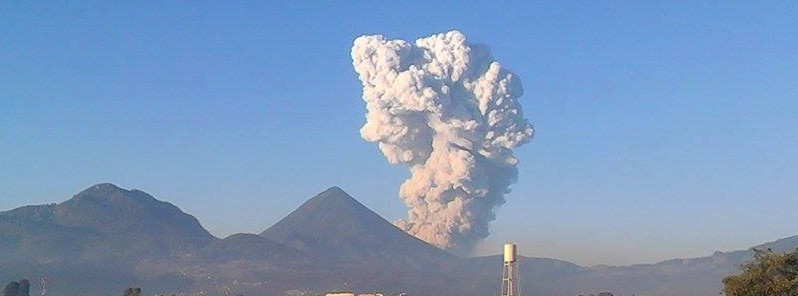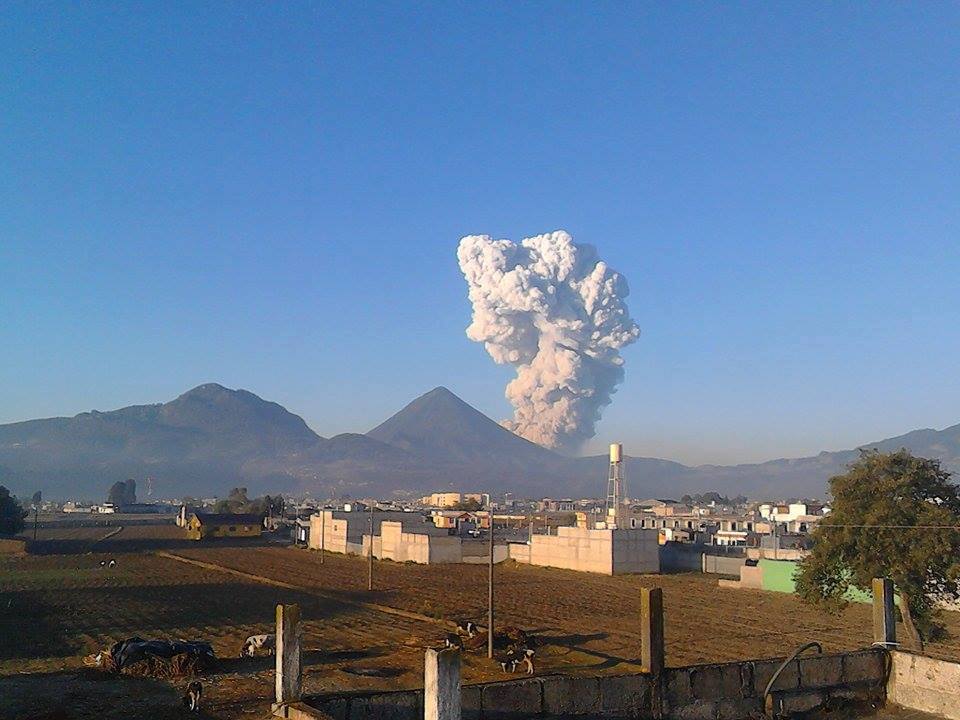Santa Maria eruption creates pyroclastic flows, ash to 6 km a.s.l., Guatemala

Guatemala's Santa Maria volcano erupted around 12:15 UTC on April 11, 2016, generating pyroclastic flows and sending ash up to 6 km (20 000 feet) above sea level.
Volcanic ash at 4.2 km (14 000 feet) is 185 km (115 miles) west of summit while volcanic ash at 6 km (20 000 feet) is approximately 278 km (172 miles) southwest of summit, Washington VAAC reported at 20:19 UTC.
The eruption was accompanied by loud rumbling and pyroclastic flows. Ashfall is possible in nearby communities, especially San Marcos, INSIVUMEH said.
Se reporta erupción en el volcán Santiaguito #Xela.@ConredGuatemala pic.twitter.com/nLCPGOlgjW
— Stereo100Noticias (@stereo100xela) April 11, 2016
Erupción del volcán Santiaguito visto desde xela #xela @Noti7 @stereo100xela @prensa_libre @EU_Xela pic.twitter.com/ENnC2pxA7B
— Lourdes (@marroquinlou) April 11, 2016
Last week, INSIVUMEH reported that during March 30 – April 3 cloud cover prevented visual observations of Caliente cone, part of Santa María's Santiaguito lava-dome complex, though sounds of small avalanches were noted.
At 10:00 local time on April 3, the agency issued a special report stating that a strong explosion occurred, and pyroclastic flows descended the E and SE flanks. Parts of the E and W crater rim collapsed, and a mushroom-shaped ash cloud rose 4 km (13 123 feet) and drifted 30 km (18.6 miles) S, SW, W, and NW. During April 4 – 5 white plumes drifted SW and SE, and weak avalanches traveled short distances.

Eruption of Santa Maria volcano on April 11, 2016 as seen from the city of Quetzaltenango. Credit: Sindy Gramajo
Geological summary
Symmetrical, forest-covered Santa María volcano is one of the most prominent of a chain of large stratovolcanoes that rises dramatically above the Pacific coastal plain of Guatemala. The 3772-m-high stratovolcano has a sharp-topped, conical profile that is cut on the SW flank by a large, 1.5-km-wide crater. The oval-shaped crater extends from just below the summit to the lower flank and was formed during a catastrophic eruption in 1902.
The renowned plinian eruption of 1902 that devastated much of SW Guatemala followed a long repose period after construction of the large basaltic-andesite stratovolcano. The massive dacitic Santiaguito lava-dome complex has been growing at the base of the 1902 crater since 1922. Compound dome growth at Santiaguito has occurred episodically from four westward-younging vents, the most recent of which is Caliente. Dome growth has been accompanied by almost continuous minor explosions, with periodic lava extrusion, larger explosions, pyroclastic flows, and lahars. (GVP)
Featured image: Eruption of Santa Maria volcano on April 11, 2016 as seen from the city of Quetzaltenango. Credit: Sindy Gramajo

Commenting rules and guidelines
We value the thoughts and opinions of our readers and welcome healthy discussions on our website. In order to maintain a respectful and positive community, we ask that all commenters follow these rules.